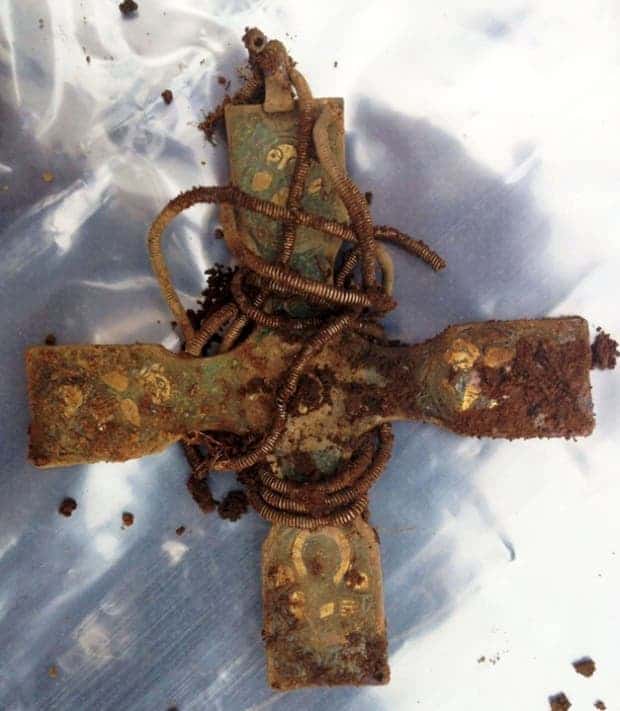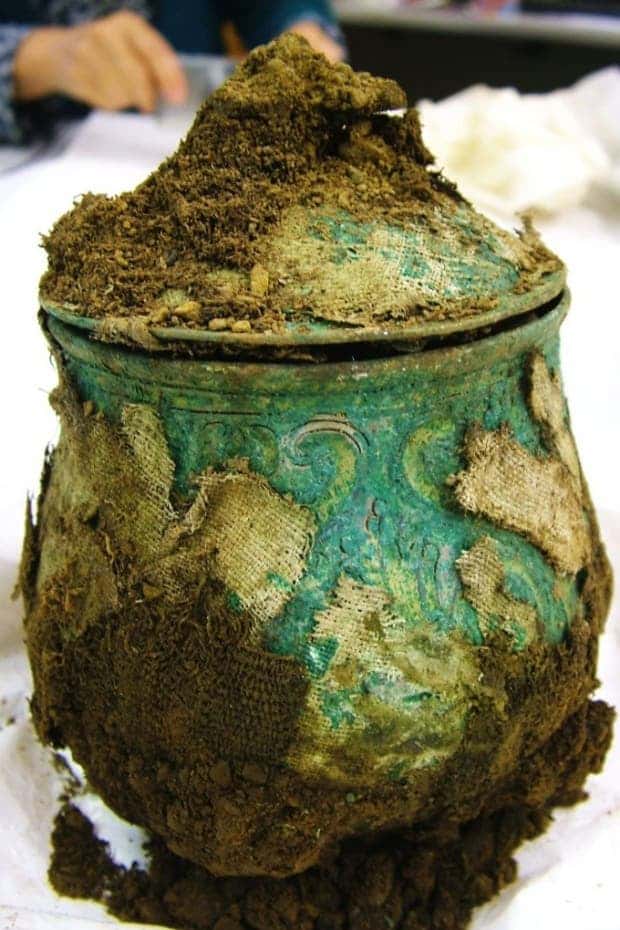
A magnificent Viking treasure has been unearthed in Scotland, in Dumfries and Galloway. More than 100 objects, including solid gold jewelry, arm bands and silver ingots, were discovered not by archaeologists, but by an amateur researcher working with a metal detector.
The artifacts are thought to have been buried between the 9th and 10th century and they also include a rare early Christian cross made of solid silver, with unusual enamelled decorations. Traditionally, Vikings worshiped the Norse pantheon, most notably Odin and Thor. The Christianisation of Scandinavia took place between the 8th and the 12th centuries and it wasn’t a smooth process. Officially, the Scandianvian countries switched to Christianity in the 12th century, though the actual conversion took place much slower. Finding a massive silver Viking Christian cross from the 9th or 10th century is spectacular.
The findings were made by Derek McLennan, 47, a retired businessman who obtained permission to search the area. Interestingly enough, he was feeling sick at that day, but forced himself to do the search.

“I dragged myself out of my sickbed because I had two friends who wanted to detect and I’m a bit of an obsessive.”
Initially, he found it hard to comprehend what he had found.
“I unearthed the first piece; initially I didn’t understand what I had found because I thought it was a silver spoon and then I turned it over and wiped my thumb across it and I saw the saltire-type of design and knew instantly it was Viking. Then my senses exploded.”
Further digging revealed more and more artifacts, and he started to understand what a precious trove he had found. Stuart Campbell, head of Scotland’s treasure trove unit is thrilled by this find. He explained that there are many extremely interesting objects, and the sheer size of the hoard is amazing. Among the remarkable objects, he also names an intact Carolingian (western European) pot with its lid still in place – something rare, probably a family heirloom, carefully passed on from one generation to the other; the Carolingian empire lasted from 768, when Charlemagne was crowned, until 887, when the empire divided. Campbell describes the lid as a “an excavation in microcosm”. He also adds:
“What makes this find so significant is the range of material from different countries and cultures. This was material that was buried for safekeeping, almost like a safety deposit box that was never claimed.”

He also said this finding could force historians to rethink the relationship between the Vikings and Scotland. Vikings colonized Scotland from the 8th to the 15th centuries, a period marked by violence and war.
“We have the idea of Vikings as foreigners who carried out raids on Scotland, but this was a Viking area where they settled and traded, and the people who lived there were culturally and linguistically Norse.”
The Scottish government’s culture secretary, Fiona Hyslop, said:
“It’s clear that these artefacts are of great value in themselves, but their greatest value will be in what they can contribute to our understanding of life in early medieval Scotland, and what they tell us about the interaction between the different peoples in these islands at that time. The Dumfries hoard opens a fascinating window on a formative period in the story of Scotland.”
To make this an even better story, the find falls under Scottish laws, which means that the finder will receive a much deserved reward – something which sadly, doesn’t happen in many countries. Unlike Scotland, in most countries, it doesn’t matter what you find – if has archaeological value, or even if it’s just underground, you get no reward for it. Personally, I find this to be a bit unfair; it’s not incredibly uncommon for amateur scientists to make remarkable finds, and this is something you’d want to encourage.


